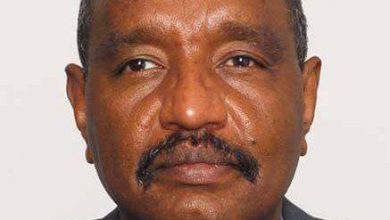Opinion
Gerteg of the Nile and Shackles of Restrictions (Episode Two)

Dr. Osama Eidrous
The Tisab
By August 2023, the battles in Khartoum had reached a state of operational stalemate, characterized by repeated attacks by militias on the engineers, armored corps, the command, and signal corps. These attacks resulted in heavy losses for the militias without gaining any significant ground. Afterward, Al-Burhan left the General Command for Port Sudan, removing himself as a strategic military target and assuming the role of head of state. In contrast, Abdulrahim Dagalo left Khartoum to regroup his forces after the attrition that had weakened his core strength, leaving the remainder of his forces in a defensive posture in Khartoum.
Abdulrahim’s departure and the forces he gathered led to the fall of army garrisons in Darfur, which had become too distant from supply lines. Meanwhile, the army leadership was burdened with the responsibilities of the state, seeking allies to secure supply chains for equipment, ammunition, and necessities as the country faced a growing cycle of displacement, refuge, and infrastructure destruction with each militia advance. At the same time, the destruction of the Shambat Bridge, linking Khartoum and Bahri, shifted the weight of militia concentrations toward the south of Khartoum, enabling them to open a new supply line after seizing the Jebel Aulia area and the reservoir bridge.
The inability to capitalize on the attrition of the militias after their failed suicide attacks and the army’s inability to initiate large-scale operations to reclaim the capital—due to the supply shortage as admitted by the army leadership—appeared to show that the state backing the rebellion had meticulously planned and seized control of all supply chains. This served as a catalyst for the militias to push southward, expanding to capture Wad Madani and large parts of the Gezira State. The militias, during their comprehensive assault, benefited from looting supplies directly from the citizens and from their ability to move freely across vast areas due to the lack of armed civilians and the distant army bases. Additionally, they took advantage of an unending flow of thieves, looters, and mercenaries from both inside and outside the country. Their expansion continued, opening the gap at Jebel Moya, threatening Sennar, and pushing forward to overrun Sinja, Suki, and Dinder, wreaking havoc in surrounding villages, causing a third wave of displacement, refuge, and destruction.
While many believe that the rainy season played a decisive role in halting this expansion, the reality is that the militias had reached the limits of their capabilities and were forced to stop to reassess their position and prepare for a new round of expansion.
The city of Babanusa and its heroes, as well as El Obeid, Delling, and later Sennar, stood as formidable barriers against the onslaught of destruction that spread through the safe villages and towns, plundering their inhabitants. This legendary resilience added to the record of heroism in Khartoum, marked by the engineers, signal corps, armored corps, and those steadfast in the command center, along with the heroes of ambushes in Kadaro and Hattab. As conspiracies and the truth of the war became evident through numerous UN reports and the persistence of the state backing the militias to destroy every spirit of resistance in Sudan in order to colonize it after displacing its people, the battles of El Fasher emerged, documenting the steadfastness of the Sudanese people, men and women, in the fight for survival and defense of their country.
As for the beginnings of today’s harvest and the Gerteg of the Nile, they began with the meeting of Karari with the lions of the engineers, paving the way for the army leadership to lay out its plans with deliberation, preparing for the great crossing.



